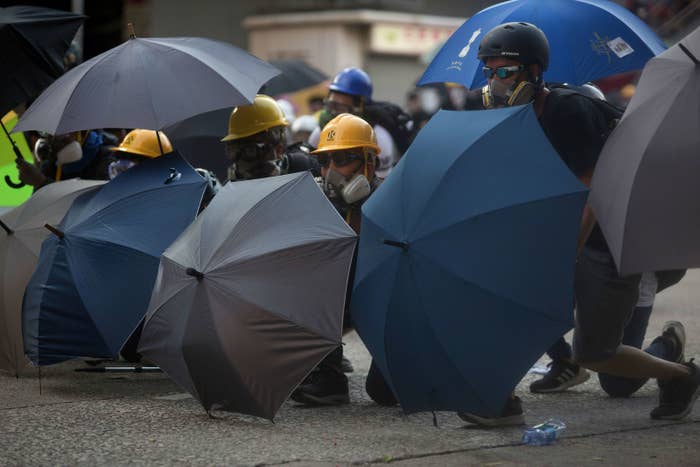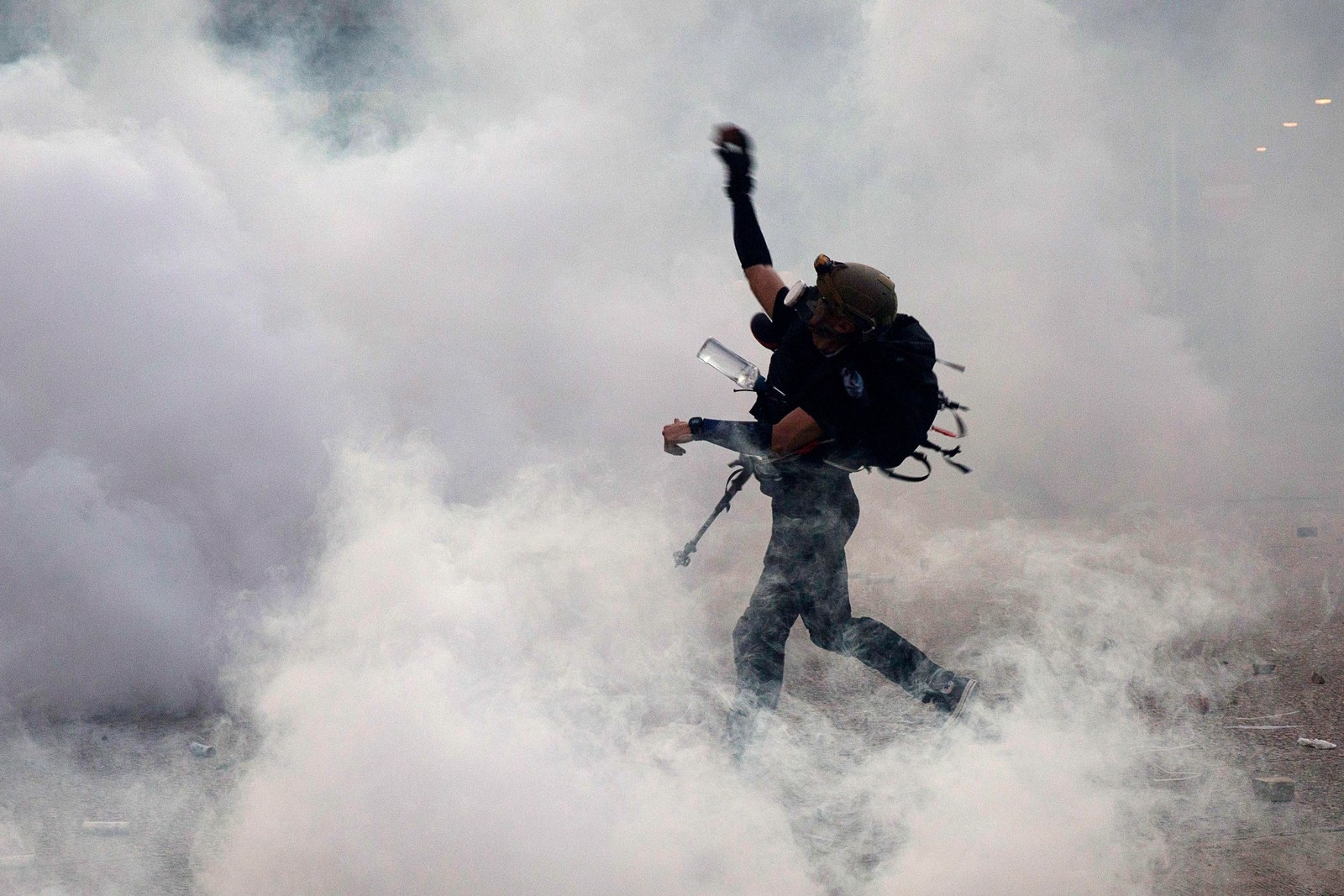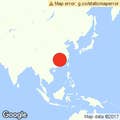
HONG KONG — More than two months of protests in Hong Kong escalated into a citywide strike Monday, heightening its worst political crisis since 1997 as roads across the city were paralyzed, dozens of people were arrested, and tear gas was fired at multiple locations simultaneously — all before the sun set.
Storefronts were shuttered across the city as residents took off from work in opposition to a controversial bill proposed by the government that would permit extraditions to China; the bill has been suspended but not withdrawn. Protesters rallied across eight locations in sweltering August temperatures, making it their most ambitious effort since protests began.
Hong Kong’s chief executive, Carrie Lam, condemned the violence of the ongoing protests in an early press conference, saying protesters were “going to push Hong Kong to the verge of a very dangerous situation.”

In the morning, hundreds of flights had been canceled because airline workers were among those striking, and protesters partially shut down the city’s train system. One person was injured when a car drove through a barrier set up by demonstrators, while a taxi was reportedly chased by protesters, some with bricks, after driving through three barriers.
In Tamar Park, one of the rally locations, protesters expressed their continued frustration with the government as speakers motivated those striking from work and shared information from the other protest sites. A makeshift Lennon Wall of mosaic notes of support popped up in the park. Athena Chan, 16, out of school for the summer, scribbled down “Hong Kong add oil” — one of the slogans of the protests — across a few Post-it Notes with a friend and stuck them to the wall.
“The government is not willing to hear the voice of the people,” said Chan. “They are abusing their power, especially the police.”
By the afternoon, standoffs between police and demonstrators had developed at several of the protest locations, with multiple rounds of tear gas fired for the third day in a row. Near the legislative building that has been a flashpoint for protests since June, police fired tear gas from behind large barriers at crowds of protesters that filled Harcourt Road, a major thoroughfare, just below Tamar Park.
Police launching tear gas at protesters and protesters volleying it back in Admiralty #hongkongstrike #HongKongProtests
Protesters have shifted their strategy by staying on the move in an effort to thwart arrests and increased police use of crowd control tactics like tear gas and rubber bullets over the last few weeks. Across the city Monday afternoon, protest sites became hot spots of activity that flared up and died down. After rounds of tear gas were fired outside the legislative building on Harcourt Road, protesters moved on to Causeway Bay and then farther east to North Point, where they were attacked by a mob armed with sticks.
Men in white are attacking protesters in North Point with large sticks. #HongKong #NoToChinaExtradition #china #antiELAB https://t.co/xTFFQ9TiE5 23 men - some with triad backgrounds - were arrested over a similar incident in June, which left 45 injured.
“The protesters don’t stay in one place for very long,” said Antony Dapiran, who wrote a book on the history of dissent in Hong Kong, saying the strategy was formed in response to the rhetoric coming from China and the Hong Kong government that mass arrests were imminent.
“They would just ‘be water’ and disappear once there was a heavy police presence. And they’ve been effectively keeping the police on the back foot,” he added of the recent protests.

Protesters used these tactics over the weekend, too — simultaneously blocking off streets at locations throughout the city — and were quick to move to new sites in a series of flash mob protests after police cleared them with sometimes rapid-fire rounds of tear gas.
When one police-approved march in the west of Hong Kong Island ended in tear gas early Sunday evening, protesters headed to Causeway Bay, usually a bustling area for tourists, blocking off roads and halting trams. Police fired heavy rounds of tear gas that engulfed the neon lights of the shopping district in smoke as protesters launched bricks and other projectiles back at them over a barricade.
This is how much tear gas is in the air right now in Causeway Bay, traditional shopping/ tourist center now lasers and gas #AntiELAB
Once the area was cleared, protesters headed to the Kowloon side of Hong Kong, closer to mainland China, where a series of skirmishes went late into the early hours of the evening, according to reports.
Protesters have been calling for Lam’s resignation since June, when large-scale protests brought as many as 2 million people to the streets. Many in Hong Kong view the extradition bill as the end of Hong Kong’s independence from China. Lam stuck to her familiar positions on Monday, saying that she would not withdraw the bill or resign and that it was up to police and law enforcement agencies to uphold the rule of law in Hong Kong.
The tone of the protests shifted July 1, when a smaller group of protesters stormed the legislature building, showing a greater willingness to use more force. They used poles and zip-tied metal barriers together to break into the building. Once inside, they threw eggs, spray-painted the walls, and smashed the windows.

Police have increasingly fired heavy rounds of tear gas at protesters to clear blockades. They said Monday that about 1,000 canisters of tear gas have been fired since the start of the protests in June and that 420 people have been arrested.
Last weekend, BuzzFeed News saw one protester about to light what appeared to be a Molotov cocktail before putting it away. Protesters have also started setting fires to keep police back when they begin clearing an area.
Did see one protester near front line w what looked like a Molotov cocktail. Put it away quickly when someone tapped his shoulder #hkprotests #antielab
Chinese state media has taken an increasingly tough stance toward the protests after initially barely covering them. An op-ed published by the Xinhua News Agency said Beijing would not sit idly by and let the situation continue. Other Chinese state media stories have blamed the US for inciting the violence in Hong Kong.
When asked about the protests in Hong Kong last week, President Donald Trump said that China “will have to deal with that themselves.”
Public records show that Hong Kong police ordered 4,000 rounds of inert grenades in 2014 from the UK company Chemring as the pro-democracy Umbrella Movement protests started to heat up. In June, the British government said it would stop supplying export licenses to Hong Kong for crowd control equipment until it investigated human rights concerns over police clashes.
Photos from this weekend’s protests also show that some of those Chemring rounds may still be deployed.
A member of Hang Seng University Student Union found at the scene of the Wong Tai Sin protests an allegedly expired tear gas canister. #antielab Source: https://t.co/wE38b3kWyN
Much of the tear gas being fired is now coming from American companies, as indicated by empty canisters found at the protest sites. One found at Sunday’s protests by BuzzFeed News, made by Nonlethal Technologies, a company in Pennsylvania, was produced in January 2019.
There are no contract award notices on the Hong Kong government’s website related to these companies, although not all contract awards are listed.
USA banned exporting tear gas crime control equipment to China after the Communist Party massacred dissidents in Tiananmen Square. If Xi Jinping doesn’t stop eroding Hong Kong’s sovereignty & halt attacks on protestors, the US must consider applying the same policy to Hong Kong. https://t.co/uvwkFgtFDV
Former Umbrella Movement protest leader Joshua Wong launched a White House petition calling for the US to suspend shipments of crowd control equipment to Hong Kong. More than 100,000 people have signed the petition so far. Republican Sen. Ted Cruz of Texas weighed in, saying that the US had suspended shipments to China after the Tiananmen Square massacre in 1989.
The rally locations have letters of no objection from the police until midnight local time Monday.

